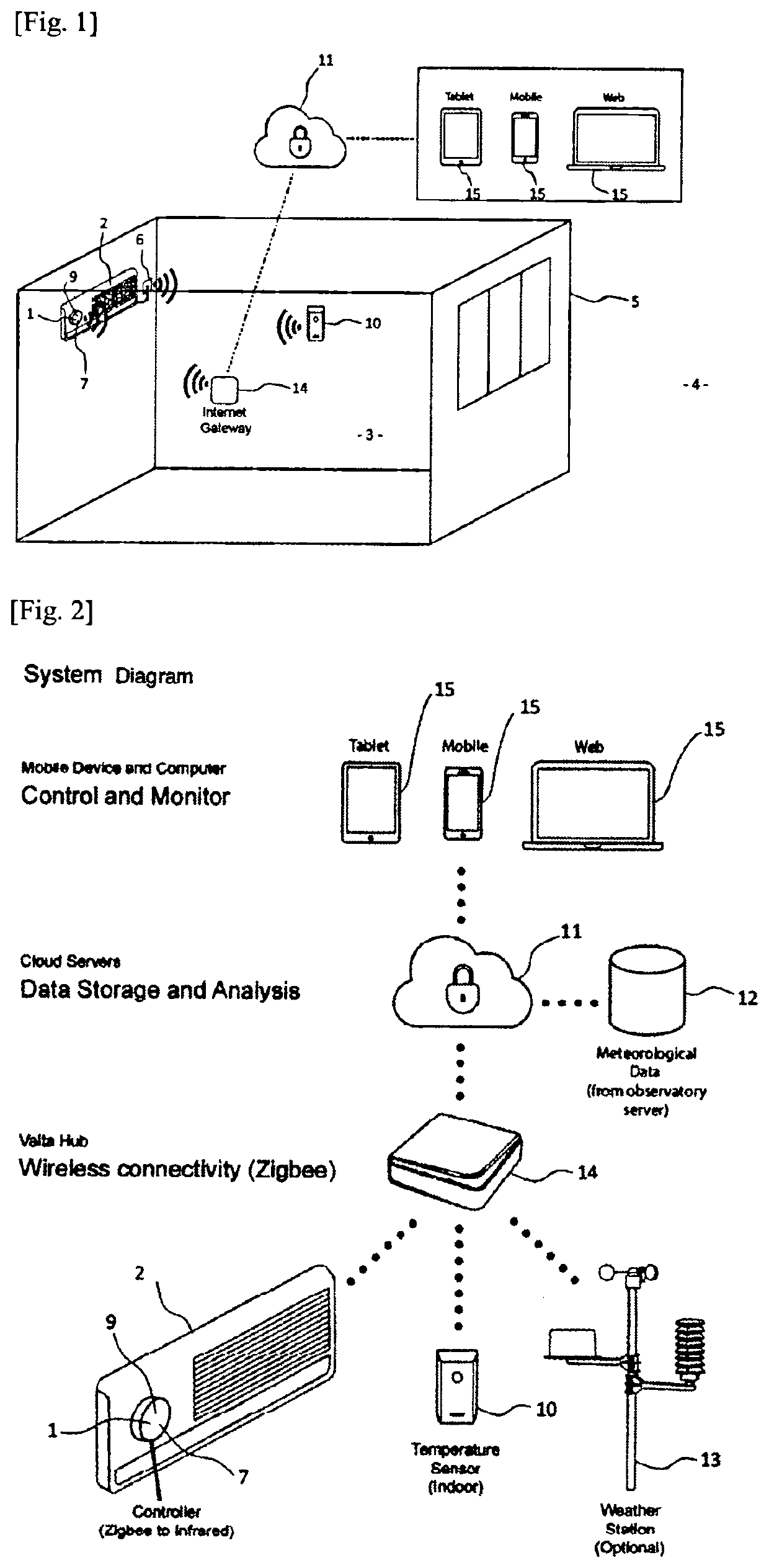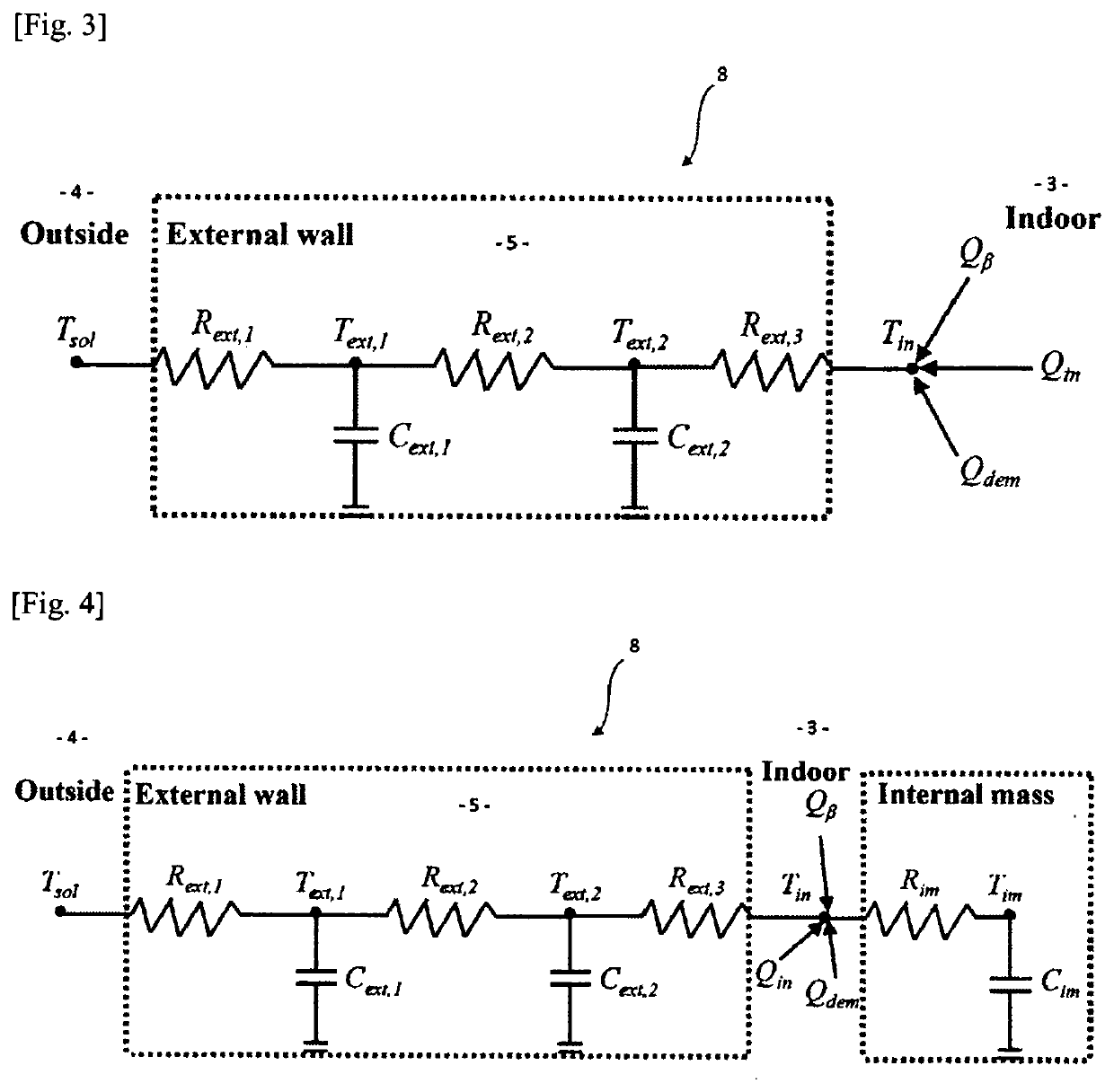Controller for HVAC unit
a hvac unit and controller technology, applied in space heating and ventilation control systems, lighting and heating apparatus, heating types, etc., can solve the problems of inability to meet the needs of domestic hvac units, inability to monitor, and expensive sensors and meters
- Summary
- Abstract
- Description
- Claims
- Application Information
AI Technical Summary
Benefits of technology
Problems solved by technology
Method used
Image
Examples
example 1
[0066]As a specific example, assume that the HVAC unit has, as an efficiency measure, a kW / ton rating of 1.33 at an input power of 40 kW, thereby providing a nominal heat transfer in the form of 30 tons of refrigeration capacity. However, the HVAC unit has a kW / ton rating of 1.50 at an input power of 60 kW, thereby providing a nominal heat transfer in the form of 40 tons of refrigeration capacity. Therefore, the HVAC unit has a higher efficiency at 40 kW input power than at 60 kW input power. In this way, the HVAC unit will have an efficiency profile over a range of input powers. Assume 1.33 is the peak efficiency, with the efficiency decreasing on either side of 40 kW of input power, and a target heat transfer of 30 tons delivered over the desired adjustment time achieves the desired indoor temperature by the end of the desired adjustment time. Then to achieve a maximum efficiency measure over the desired adjustment time, the input power profile supplied to the HVAC unit would comp...
example 2
[0067]However, now assume a target heat transfer of 40 tons delivered over the desired adjustment time is required to achieve the desired indoor temperature by the end of the desired adjustment time, and the efficiency of the HVAC unit continues to decrease at input powers above 60 kW. Then to achieve a maximum efficiency measure over the desired adjustment time, the input power profile supplied to the HVAC unit would comprise supplying an input power of 60 kW over the whole desired adjustment time.
example 3
[0068]Now assume that the HVAC unit has a kW / ton rating of 1.20 at an input power of 60 kW, thereby providing a nominal heat transfer in the form of 50 tons of refrigeration capacity, and a kW / ton rating of 1.33 at an input power of 40 kW, thereby providing a nominal heat transfer in the form of 30 tons of refrigeration capacity. Also, assume 1.20 is the peak efficiency, with the efficiency decreasing on either side of 60 kW of input power. Finally, assume a target heat transfer of 30 tons delivered over the desired adjustment time achieves the desired indoor temperature by the end of the desired adjustment time. Then to achieve a maximum efficiency measure over the desired adjustment time, the input power profile supplied to the HVAC unit would comprise supplying an input power of 60 kW over the final 60% of the desired adjustment time, that is, 60% of 50 tons, in order to provide the required 30 tons.
[0069]Alternatively or additionally, the input power profile can correspond to a ...
PUM
 Login to View More
Login to View More Abstract
Description
Claims
Application Information
 Login to View More
Login to View More - R&D
- Intellectual Property
- Life Sciences
- Materials
- Tech Scout
- Unparalleled Data Quality
- Higher Quality Content
- 60% Fewer Hallucinations
Browse by: Latest US Patents, China's latest patents, Technical Efficacy Thesaurus, Application Domain, Technology Topic, Popular Technical Reports.
© 2025 PatSnap. All rights reserved.Legal|Privacy policy|Modern Slavery Act Transparency Statement|Sitemap|About US| Contact US: help@patsnap.com



